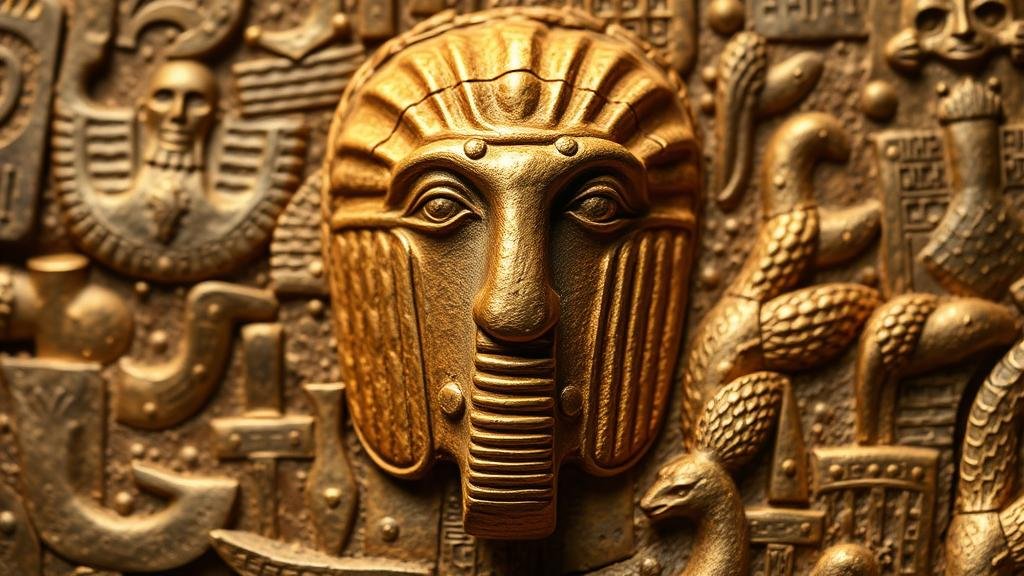Searching for the meaning behind the “Golden Scarabs” of ancient Egyptian tombs.
Exploring the Meaning Behind the Golden Scarabs of Ancient Egyptian Tombs
The Golden Scarabs of ancient Egyptian tombs are not just stunning artifacts; they hold profound significance within the context of Egyptian cosmology and social structure. These artifacts offer a glimpse into the spiritual beliefs and cultural practices of ancient Egyptians, making them essential for understanding their civilization.
The Historical Context of Scarabs
Scarabs, or scarab beetles (Scarabaeus sacer), were revered in ancient Egypt due to their unique lifecycle, which symbolized regeneration and rebirth. The ancient Egyptians observed the beetle rolling balls of dung, which they associated with the sun and the cycle of life. dung ball served as both a source of food and a nursery for larvae, mirroring the way the sun rolls across the sky.
From as early as 2650 BCE during the Fourth Dynasty, scarab imagery became prominent in Egyptian art and burial practices. The use of scarabs as amulets and grave goods indicated their significance as symbols of protection and resurrection for the deceased in the afterlife.
The Symbolism of Gold
The choice of gold for crafting scarabs is equally relevant. Gold was associated with the divine, the eternal, and the afterlife. Its incorruptibility and shimmer mirrored the attributes assigned to the gods, particularly Ra, the sun god. So, golden scarabs served not only as funerary items but also as objects imbued with divine significance, offering protection and assurance of a safe journey into the afterlife.
Archaeologists have uncovered numerous golden scarabs in tombs across Egypt, particularly in royal tombs such as those found in the Valley of the Kings. For example, the tomb of Tutankhamun, discovered in 1922 by Howard Carter, contained several golden scarabs, one of which bore an inscription that highlighted its significance as a talisman of protection for the young pharaoh in the afterlife.
Excavations often reveal that scarabs were inscribed with hieroglyphics, detailing the names of the deceased and connecting them to the gods. For example, the scarab found within the tomb of Pharaoh Seti I (c. 1290-1279 BCE) includes a prayer for protection and resurrection, reinforcing the cultural belief that the deceased could leverage divine favor for immortality.
Modern Interpretations and Cultural Impact
Today, the fascination with golden scarabs extends beyond academic circles. They have become symbols of mystery and allure in various modern contexts. Jewelry items featuring scarab motifs are popular among those wishing to invoke luck or protection, while their imagery is frequently used in movies, literature, and popular culture, often detached from their original meanings.
Also, the golden scarabs have raised inquiries into broader themes of life and death, regeneration, and spiritual beliefs across different cultures. They serve as a reminder of humanitys ongoing quest to understand existence and what lies beyond.
Questions and Concerns
Some may wonder about the authenticity of certain golden scarabs available in the market today. As interest in antiquities rises, so too do concerns over forgeries. It is crucial for collectors and enthusiasts to engage with reputable dealers and archaeologists when exploring the acquisition of such artifacts. Provenance, or the history of ownership, is vital to ensure authenticity.
Conclusion: Actionable Takeaways
Golden scarabs exemplify the sophisticated beliefs of ancient Egyptians regarding life, death, and the afterlife. As historical artifacts, they provide insight into the values held by one of historys most intriguing civilizations. For anyone interested in deeper studies of ancient Egypt, exploring scholarly texts and visiting museums with Egyptian collections can enhance understanding.
- Engage with academic literature on ancient Egyptian beliefs and practices.
- Visit museum exhibitions featuring Egyptian artifacts to experience the historical context firsthand.
- Consult experts to verify the authenticity of ancient artifacts before acquiring them.



